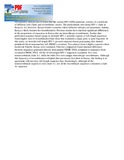| dc.contributor.author | Land, AM | |
| dc.contributor.author | Ball, TB | |
| dc.contributor.author | Luo, M | |
| dc.contributor.author | Rutherford, J | |
| dc.contributor.author | Sarna, C | |
| dc.contributor.author | Wachihi, C | |
| dc.contributor.author | Kimani, J | |
| dc.contributor.author | Plummer, FA | |
| dc.date.accessioned | 2013-06-28T13:35:38Z | |
| dc.date.available | 2013-06-28T13:35:38Z | |
| dc.date.issued | 2008-06 | |
| dc.identifier.citation | AIDS Res Hum Retroviruses. 2008 Jun;24(6):865-72. doi: 10.1089/aid.2007.0200 | en |
| dc.identifier.uri | http://hinari-gw.who.int/whalecomwww.ncbi.nlm.nih.gov/whalecom0/pubmed/18544023 | |
| dc.identifier.uri | http://erepository.uonbi.ac.ke:8080/xmlui/handle/123456789/41847 | |
| dc.description.abstract | Phylogenetic analysis has revealed that the current HIV/AIDS pandemic consists of a multitude of different viral clades and recombinant viruses. The predominant circulating HIV-1 clade in Kenya is A1; however, Kenya borders countries where different subtypes are prominent, making Kenya a likely location for recombination. Previous studies have reported significant differences in the proportions of sequences in Kenya that are intersubtype recombinants. Studies that performed sequence-based typing on multiple HIV-1 genomic regions or full-length sequences found higher rates of recombination than those that examined a single gene or gene fragment. In this study, we describe full-length HIV-1 proviral sequence-based genotyping after limited peripheral blood mononuclear cell (PBMC) coculture. Ten subjects from a highly exposed cohort located in Nairobi, Kenya were examined. Pairwise comparison found minimal difference between sequences generated directly from patient PBMC DNA compared to sequences from cocultured PBMC DNA. Of the 10 full-length HIV-1 sequences examined, five were nonrecombinant clade A1, while the other five were unique intersubtype recombinants. Although this frequency of recombination is higher than previously described in Kenya, this finding is in agreement with previous full-length sequence data. Interestingly, although all the nonrecombinant sequences were clade A1, not all the recombinant sequences contained a clade A1 sequence. | en |
| dc.language.iso | en | en |
| dc.publisher | University of Nairobi | en |
| dc.title | Full-length Hiv Type 1 Proviral Sequencing Of 10 Highly Exposed Women From Nairobi, Kenya Reveals A High Proportion Of Intersubtype Recombinants. | en |
| dc.type | Article | en |
| local.publisher | Department of Medical Microbiology | en |

